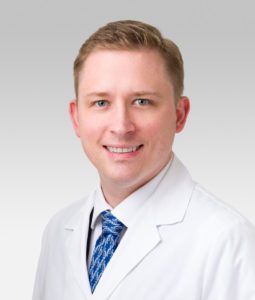SGO Wellness: Picturing Improved Physician Wellbeing | Edward Tanner, MD

Edward Tanner, MD
Several months ago, I started painting as a hobby. I was looking for a way to improve my focus with an activity I could enjoy each morning before the day began. With no artistic background, I was starting from scratch and became overwhelmed: watercolors or oil? Abstract or landscapes? Things got complicated quickly but I was eager to learn. I read books, sketched freehand, and ordered supplies that I really wasn’t ready to use. Then, I ordered a “paint by numbers” kit. Suddenly, I was a budding Picasso! Using pictures of family or vacations, I could complete a detailed painting on my own in a few days. It was gratifying to create something new and entirely different from my job as a gynecologic oncologist. I even experienced the increased focus at work that I was hoping to cultivate.
After completing a few paintings with these kits, I started to see the limitations of learning to paint this way. What if I didn’t like the colors provided in the kit? Tough luck – I didn’t have enough paint to change anything and wouldn’t know how to alter the color palette anyway. What if I wanted to make a similar painting in a larger size? Nope – I didn’t have the skill to change the picture.
During these quiet moments each morning, I thought about how my new hobby paralleled my experience as a teacher and mentor. Were these paint by number kits the artistic equivalent of walking a resident through their first hysterectomy with a right-angle dissector and precise counter-traction? How about when I lay out a detailed process for a fellow starting a new research project? Perhaps I was giving my trainees a false sense of accomplishment when laying out a path for success so explicitly. At some point, we all need to be given the space to experiment – and even fail. While the concept of graduated responsibility was not new to me, painting gave me a new perspective about facilitating a successful transition from novice to expert. Initially, we can emulate the success of others by copying their technique, gaining confidence along the way. Eventually, we need to find a safe space to try something entirely new. While I am now trying to paint “without numbers,” I now have a deeper understanding about how trying something new – and occasionally failing – is part of the process of mastery.
Not surprisingly, evidence supports the benefits of hobbies on physician wellness. Oncologists with hobbies are more likely to report higher levels of well-being than those who do not.1 In particular, art therapy has been linked to reduced burnout in oncologists.3 Physician surveys suggest that very few of us spend anywhere close to as much time participating in hobbies or other personal activities as we would like.2 Personally, I have found painting to be a great way to improve my focus and concentration at work. I was surprised to find that painting has given me greater perspective as an educator as well. Consistently carving out time for ourselves can be nearly impossible, but it’s important that we continue to make the effort. Hobbies not only help us to reduce burnout at work but they can also provide lots of other unexpected benefits: improved perspective, a sense of purpose, and time to reflect upon our values.
References
1. Shanafelt TD, et al. The well-being and personal wellness promotion strategies of medical oncologists in the North Central Cancer Treatment Group. Oncology 2005; 68(1): 23-32.
2. Italia S, et al. Evaluation and art therapy treatment of the burnout syndrome in oncology units. Psychooncology 2008; 17(7): 676-80.
3. Heuser CC, et al. Moms in medicine: Job satisfaction among physician-mothers in obstetrics and gynecology. Work 2018; 60(2): 201-7.
Edward Tanner, MD, MBA, is Chief of Gynecologic Oncology at Northwestern Medicine in Chicago, IL.